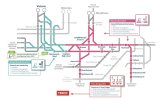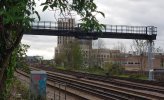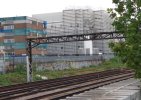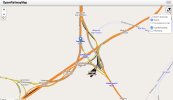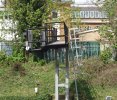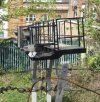Quite a few of the scheme plans I had got wet during location case surveys! I walked most of the scheme twice. I don’t remember old signal heads etc. being kept, it’s possible some predated the use of SL35 lamps as installed pre-war so incompatible with 1970’s standards.
There were a number of signal heads that had already been replaced by maintenance with SL35 heads, and it was deemed didn't need replacing.
The WARS scheme gained the nickname "Wimberloo", because of the number of times the potential site for the control centre was changed during scheme development.
As I recall the building at Clapham Junction included rooms for both the SW and Central side relay rooms. Both massive rooms However, it was decided for railway political reasons that they had to go in separate buildings. The spare room got nicknamed the football pitch as I recall. Something to do with Clapham Junction being a SW station, and they didn't want the Central RR being maintained by SW technicians.
The WR E10K interlockings were a compromise. Although free wired within each individual rack, where circuits needed to go across to another rack they used a structured system of inter-rack multicore cabling terminated on the rack top 'belling lees' (manufacturer of the usual screw terminal blocks used). So the Western interlockings had less individual wire but more termination points on average per circuit. That didn't seem to be a reliability issue in service, a concern some full free wiring enthusiasts had about the method.
The problem with E10k from a design point of view was that every time a circuit went from one rack to another, you had to find a spare allocation in the rack-rack multi cores to run it in. And you had to show it on the circuit diagram between the contacts, which meant you had to leave more space between those contacts (or rub out everything to the right and redraw it if you hadn't). With alterations, they were usually reluctant to put in more rack-rack multicores, particularly just for one connection. So if your circuit ran from rack A to rack B, but there were no spare cores left in the A-B multicore, you might have to go A-C then C-B.
The advantage of it though was that they could replace an individual rack relatively easily. Build the new rack, undo the multicores from the top of the old rack, remove the old and put in the new, and reterminate the multicores. When I moved to Reading, I was astounded to find that when the Area installation teams had nothing much to do, they were tasked with routine relay rack replacements.
